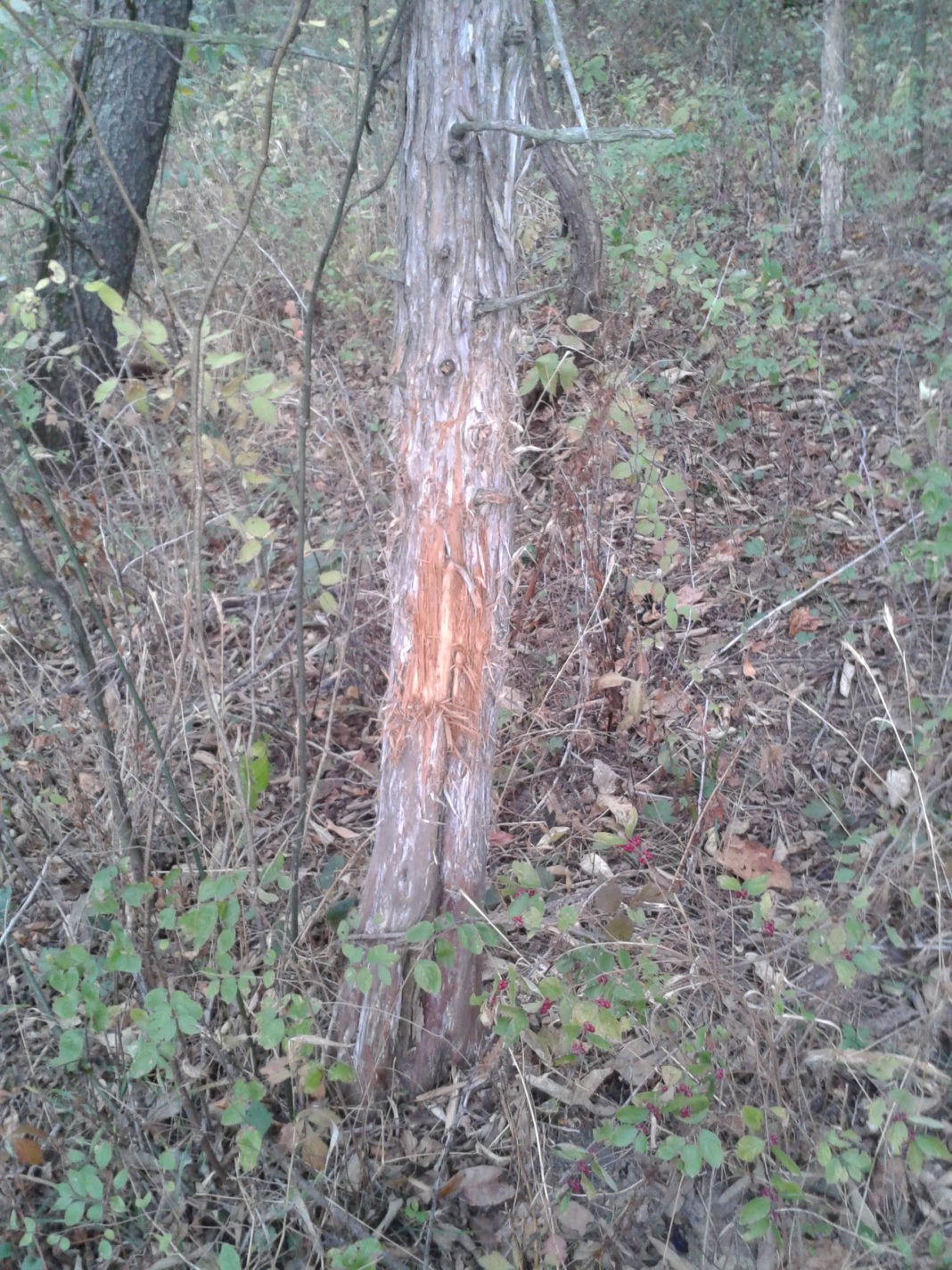Are rubs worth hunting? Yes and no. Even though I don’t hunt rubs at certain times of the year, I use them as a source of information.
Rubs are one time when size does matter. The bigger the diameter of the tree the rub is on, the bigger the buck that made that rub. Big bucks will rub small trees, but small bucks do not rub big trees. When you find a rubbed tree of at least six inches in diameter, you be sure a mature buck made that rub.
Bucks are known to rub trees in the same area from one year to the next. Often, bucks rub the same tree year after year. Hunters who know where rubs were located in previous seasons can use this to their advantage, as long as the buck who made the rub is still alive. Hang a stand before rubs start appearing in order to ambush a buck as he comes to renew his rub line.
For the rest of the rut, I forget about buck rubs. However, around the third week of November, new rubs start showing up. This happens when bucks are actively searching for hot does. You will normally find these new rubs on the downwind side of the thick brush that might hold bedded does. Set your stand upwind of rub lines. There will be a good chance of ambushing a cruising buck.
By learning to interpret rubs, hunters will be able to tell where bucks are eating and sleeping. If the shiny side of a rub is facing a dense thicket, then it’s more likely to be the place where the bucks are breeding. If the shiny side of the rub is facing a food plot, clover field, or other source of food, that’s probably where they spend the night eating. Set up and hunt accordingly.
Tell us what you think in the comments section below.
Photos: Lotte Houser









![The Best Deer Camp Chili [VIDEO] Deer Chili Ingredients, Tomatoes, Chili Spices](/wp-content/uploads/2015/10/Deer-Chili-Deer-Camp-Recipe-218x150.jpg)








![How to Call Elk Early in the Season [VIDEO]](/wp-content/uploads/2016/08/byers003-218x150.jpg)





![Idiots Disturb Hunter: How Would You Have Handled It? [VIDEO]](/wp-content/uploads/2015/10/DSC00110-e1474487693878-100x70.jpg)
![Albino Buck Shocked to Shed His Antlers [VIDEO]](/wp-content/uploads/2015/10/AlbinoDeer-100x70.jpg)